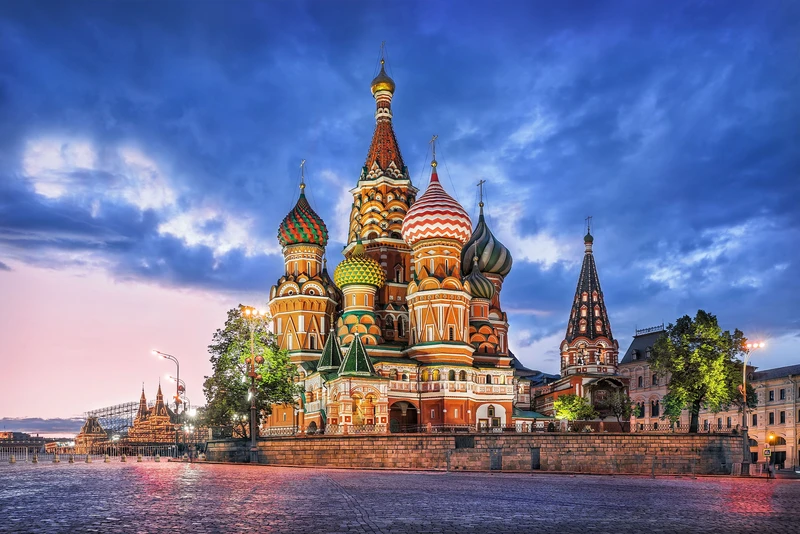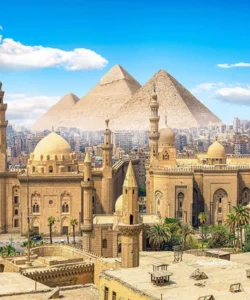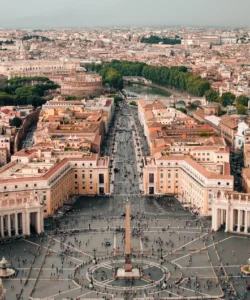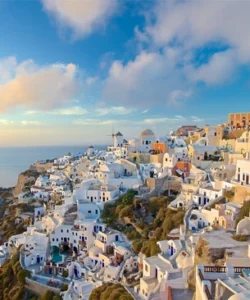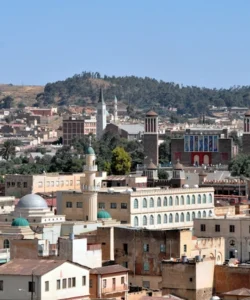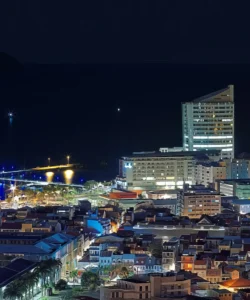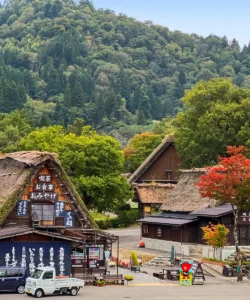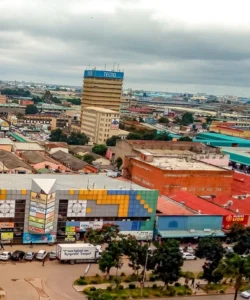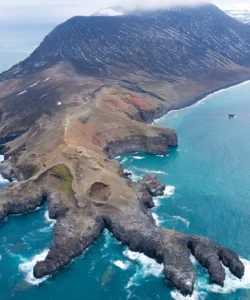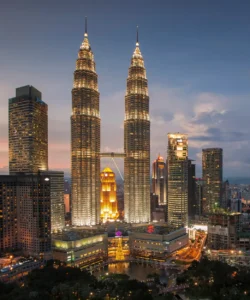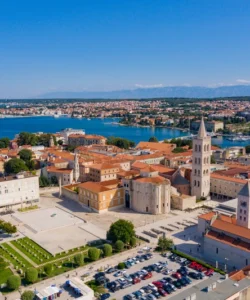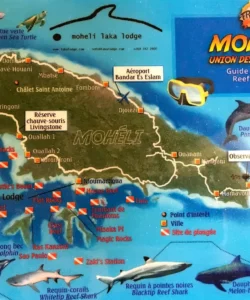Russia, officially the Russian Federation, is a transcontinental country spanning Eastern Europe and Northern Asia. It is the largest country in the world by area, covering over one-eighth of Earth’s inhabited landmass, and extends across eleven time zones. Russia shares land borders with 14 countries. It is renowned for its vast landscapes, rich cultural heritage, influential history, and significant role in global affairs.
![]()
Area: Approximately 17,098,246 square kilometers (6,601,670 sq mi).
Population: As of 2023, the population is estimated at around 144 million (excluding Crimea).
Language: The official language is Russian, an East Slavic language and the most widely spoken Slavic language. Over 100 minority languages are also recognized across various republics and regions. English proficiency varies, being more common among younger generations and in major urban/tourist centers.
Currency: The official currency is the Russian Ruble (RUB).
Religion: The predominant religion in Russia is Orthodox Christianity, primarily adherents of the Russian Orthodox Church. There are also significant communities of Muslims, other Christian denominations, Buddhists, and Jews. A considerable portion of the population identifies as non-religious.
Capital: Moscow is the capital and largest city of Russia. It is a major political, economic, cultural, and scientific center, famous for its iconic Red Square, historic Kremlin, and grand architecture.
Major Cities: Besides Moscow, other significant cities include Saint Petersburg, Novosibirsk, Yekaterinburg, Nizhny Novgorod, Kazan, Chelyabinsk, Omsk, Samara, and Rostov-on-Don.
Attractions & Wonders: Russia offers an unparalleled range of attractions, from magnificent imperial palaces and historic sites to vast natural wildernesses and unique cultural experiences:
- Moscow:
- Red Square: The most iconic landmark, home to St. Basil’s Cathedral, the Kremlin walls, Lenin’s Mausoleum, and GUM department store.
- The Kremlin: A historic fortified complex that houses the official residence of the Russian President, cathedrals, and museums like the Armory Chamber.
- St. Basil’s Cathedral: A vibrant, multi-domed masterpiece of Russian architecture on Red Square.
- Bolshoi Theatre: One of the world’s most famous opera and ballet companies.
- Moscow Metro: Renowned for its elaborately decorated stations, often called “underground palaces.”
- State Tretyakov Gallery: Houses a vast collection of Russian fine art.
- Saint Petersburg:
- The State Hermitage Museum (Winter Palace): One of the largest and oldest museums in the world, housed in the magnificent former Winter Palace of the Russian Tsars.
- Church of the Savior on Spilled Blood: A stunning, onion-domed church built on the spot where Emperor Alexander II was assassinated.
- Peterhof Palace and Garden (Petrodvorets): Known as the “Russian Versailles,” famous for its spectacular fountains and opulent palaces.
- Catherine Palace and Park (Tsarskoye Selo): Home to the breathtaking Amber Room.
- Nevsky Prospekt: The city’s main avenue, bustling with shops, restaurants, and historic buildings.
- Mariinsky Theatre: A world-renowned opera and ballet theatre.
- Trans-Siberian Railway: The longest railway line in the world, offering an epic journey across the vast expanse of Russia, from Moscow to Vladivostok, passing through diverse landscapes and cultures.
- Lake Baikal: The world’s deepest and oldest freshwater lake, containing around 20% of the world’s unfrozen fresh water. A UNESCO World Heritage site, known for its unique biodiversity and stunning natural beauty.
- Sochi: A popular resort city on the Black Sea, known for its subtropical climate and as the host of the 2014 Winter Olympics.
- Golden Ring: A group of ancient towns northeast of Moscow (e.g., Suzdal, Vladimir, Sergiev Posad, Yaroslavl) that preserve the memory of important events in Russian history and showcase unique Russian architecture.
- Kazan: Capital of Tatarstan, known for its Kremlin (a UNESCO site) that blends Orthodox and Islamic architecture.
- Volgograd (formerly Stalingrad): Site of the pivotal Battle of Stalingrad, marked by the colossal “Motherland Calls” statue.
- Kamchatka Peninsula: A remote and volcanic region in the Russian Far East, known for its geysers, hot springs, bears, and active volcanoes (a UNESCO World Heritage site).
Architecture: Russian architecture is incredibly diverse, reflecting a long history of various influences, from Byzantine and indigenous Slavic traditions to Western European styles:
- Traditional Russian (Old Russian): Characterized by wooden churches, onion domes, tent-shaped roofs, and vibrant colors (e.g., St. Basil’s Cathedral). Influences from Byzantine and early Slavic styles.
- Moscow Baroque (Naryshkin Baroque): A distinctive 17th-century style with ornate white stone decorations on red brick.
- Petrine Baroque: Introduced during the reign of Peter the Great, a more restrained and Western-influenced Baroque style in Saint Petersburg.
- Elizabethan Baroque: Grand and opulent, characteristic of the mid-18th century (e.g., Winter Palace, Catherine Palace).
- Neoclassical: Dominant in the late 18th and early 19th centuries, particularly in Saint Petersburg’s imperial architecture.
- Russian Revival: A 19th-century movement that sought to revive traditional Russian architectural elements (e.g., Church of the Savior on Spilled Blood).
- Art Nouveau (Modern Style): Early 20th century, with elaborate facades and organic forms.
- Constructivism: A revolutionary avant-garde style in the early Soviet period, emphasizing functionality and geometric forms.
- Stalinist Empire Style (Stalinist Classicism): Grand, monumental, and often ornate style of the mid-20th century (e.g., the “Seven Sisters” skyscrapers in Moscow, some Metro stations).
- Soviet Modernism: Post-Stalinist, more austere and functional designs.
- Contemporary: Modern Russian architecture is diverse, with new skyscrapers, innovative public buildings, and urban developments, often blending international trends with national identity.
Roads: Russia has an extensive road network, though quality varies significantly. Major federal highways connecting large cities (e.g., Moscow-Saint Petersburg, parts of the Trans-Siberian Highway) are generally well-maintained. However, many regional and rural roads, especially in less populated areas, can be in poor condition, unpaved, or challenging to navigate, particularly during winter. Road infrastructure has seen improvements in recent years, but vast distances and climate pose challenges.
Hotels: Russia offers a wide range of accommodation options, particularly in Moscow and Saint Petersburg. You’ll find luxury international chain hotels (e.g., Marriott, Hilton, Radisson), numerous boutique hotels, and budget-friendly hostels and guesthouses. Outside the major cities, options become more localized, including regional hotels, sanatoriums (health resorts), and guesthouses. Unique experiences can include staying in traditional wooden izbas or remote lodges near natural attractions.
Restaurants: Russian cuisine is hearty and diverse, with influences from Slavic, European, and Central Asian culinary traditions. It often features root vegetables, grains, sour cream, and various meats and fish.
- Moscow and Saint Petersburg are culinary capitals, offering a vast array of restaurants from traditional Russian fare to high-end international dining, trendy cafes, and various ethnic cuisines.
- Traditional Russian Dishes:
- Borscht (Борщ): A beetroot soup, served hot or cold, often with sour cream (smetana).
- Pelmeni (Пельмени): Small, savory dumplings typically filled with minced meat, served with sour cream, butter, or vinegar.
- Blini (Блины): Thin pancakes, often served with savory (smoked salmon, caviar, sour cream) or sweet (jam, honey) fillings.
- Beef Stroganoff (Бефстроганов): Sautéed pieces of beef served in a sour cream sauce, typically with noodles or mashed potatoes.
- Shashlik (Шашлык): Skewered and grilled pieces of marinated meat, popular during summer.
- Pirozhki (Пирожки): Small baked or fried buns with various fillings (meat, cabbage, potatoes, fruit).
- Okroshka (Окрошка): A cold summer soup made with kvass (a fermented bread drink), vegetables, and sometimes meat.
- Soljanka (Солянка): A thick, sour, and spicy soup, often with various meats, olives, and pickles.
- Caviar (Икра): Both black (sturgeon) and red (salmon) caviar are considered delicacies.
- Kvass (Квас): A traditional fermented beverage made from rye bread, slightly alcoholic.
- Vodka (Водка): Russia’s iconic alcoholic beverage, often consumed neat.
- Tea (Чай): A deeply ingrained part of Russian culture, often served from a samovar.
